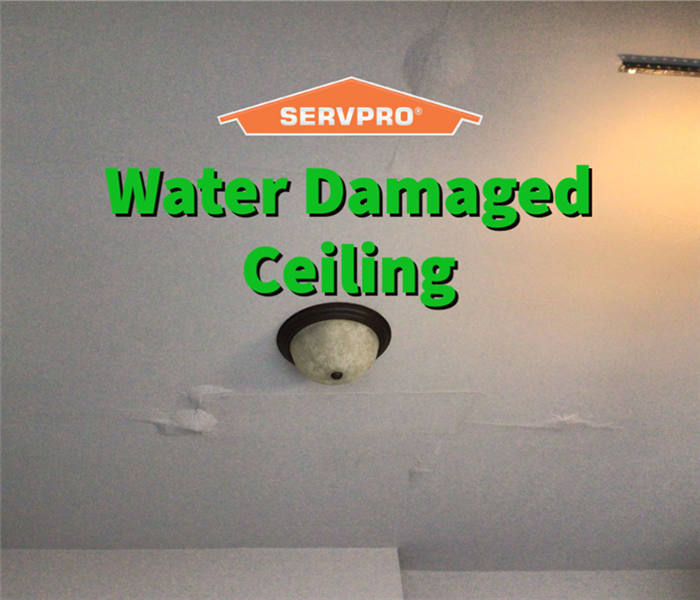6 Water Damaged Ceiling Causes and Expert Restoration
7/14/2022 (Permalink)
Have you discovered a water damaged ceiling? Let us help!
Water damage can be a serious issue and should be repaired as soon as possible to avoid further damage. If you find a water damaged ceiling, you should contact a professional to get the job done right.
In this article, we'll discuss what to do when your ceiling has been damaged by water and the risks of waiting for professional water damage restoration.
Signs of a water damaged ceiling
If you suspect your ceiling may be water damaged, there are a few signs you can look for in your home. Some of the most common signs of water damage include:
- Stains on the ceiling
- Mold or mildew growth
- Peeling paint
- Damaged drywall or plaster
- Sagging or warped ceilings
If you notice any of these signs, it's crucial to contact a water damage restoration professional as soon as possible. Waiting to repair water damage can lead to further damage.
What causes a water damaged ceiling?
Water damage can be caused by a variety of things, including:
- Leaking roofs. If your roof is leaking, water can seep through the holes and cracks and cause damage to your ceiling.
- Condensation. High humidity in your home can cause water to condense on your ceilings and cause damage.
- Flooding. If your home is flooded, water can seep through the walls and ceiling and cause damage.
- Broken pipes. When a pipe bursts on an upper level, water can pour through the ceiling and cause damage.
- Storm damage. Storm damage can give water a path to enter through the roof or walls and cause damage.
- Water damage from appliances, such as dishwashers and washing machines.
If you suspect that your ceiling may be water damaged, it's important to find the source of the leak and have it repaired as soon as possible.
What to do when you discover a water damaged ceiling
If you discover a water damaged ceiling, there are a few things you should do right away.
- Make sure the area is safe to enter and avoid any potential hazards, such as electrical cords or furniture that may have been wet.
- If possible, try to determine the source of the water and repair it or stop the flow of water to prevent further damage.
- Contact a professional to assess the damage and begin the repair process.
Water damage restoration
If you have water damage to your ceiling, getting it repaired as soon as possible is essential. Water damage can lead to several problems, including structural damage and mold growth.
The process of repairing a water damaged ceiling generally involves:
- Removing the damaged drywall
- Cleaning up any water or mold
- Repairing any structural damage
- Applying a new layer of drywall
If you're not comfortable repairing yourself, it's best to contact a professional. They will have the experience and knowledge needed to do the job correctly.
Waiting to repair water damage can be risky
It's important to remember that water damage can lead to severe consequences if it's not repaired quickly. Mold can grow, lengthening the repair process. Additionally, water damage can cause structural damage to your home or business, which can be expensive to repair.
If you have a water damaged ceiling, don't wait to contact a professional for help. The sooner you begin the repair process, the less damage your home or business will sustain.
Water damage restoration with SERVPRO of Athens
If you have a water damaged ceiling, it's important to take action as soon as possible. Not only can water damage lead to cosmetic issues and mold growth, but it can also cause structural damage.
In this article, we've outlined what to do when you discover a water damaged ceiling and the risks of waiting for professional water damage restoration.
SERVPRO of Athens is here for all of your water damage restoration needs. Our expert team is ready for your call and can be onsite as soon as possible to ensure the water damage doesn't cause more damage to your home. So trust us to make your home "Like it never even happened."





 24/7 Emergency Service
24/7 Emergency Service
